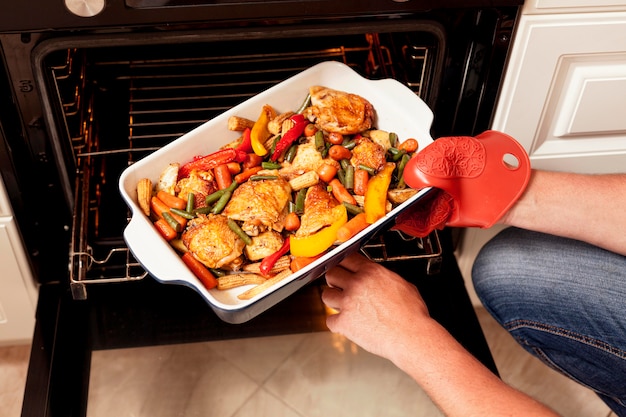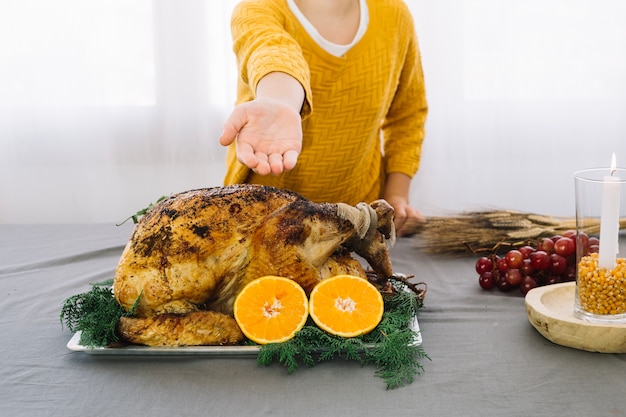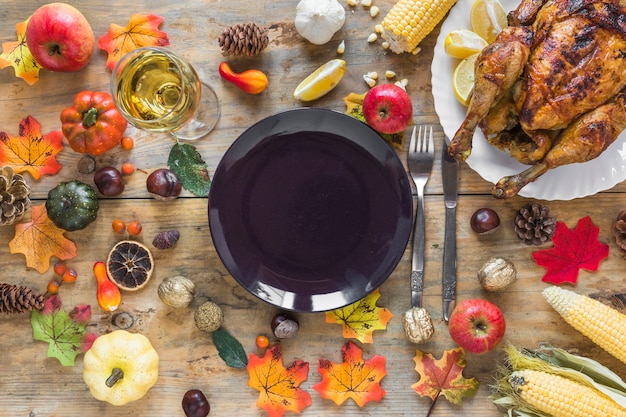The slow cooker. A culinary lifesaver for busy cooks, a champion of flavour, and a haven for effortlessly delicious meals. Just imagine – tossing ingredients into its ceramic embrace, knowing that by dinnertime, mouthwatering aromas will be wafting through your house. And when it comes to transforming a humble chuck roast into melt-in-your-mouth tenderness, the slow cooker reigns supreme. But how long should you cook a roast on high? Well, my friends, let’s dive into the world of high-heat slow cooking and discover the secrets to tender perfection.
(Part 1) The Joy of Slow Cooking: A culinary journey

My love affair with the slow cooker began during my student days, when my culinary skills were limited to boiling water and surviving on instant noodles. The slow cooker was a revelation, a way to create hearty, wholesome meals without spending hours slaving over a hot stove. As my cooking confidence grew, the slow cooker remained my constant companion, transforming tough cuts of meat into tender masterpieces, simmering stews, and crafting the most comforting soups.
My First Slow Cooker Triumph: A Memory to Savor
My first real slow cooker triumph was a classic beef stew. The anticipation was palpable as I layered the chuck roast, vegetables, and a rich homemade stock into the pot, set it on low, and let it work its magic for hours. The aroma that filled my tiny flat was pure magic. When I finally lifted the lid, the stew was a revelation – a symphony of tender, falling-apart meat, infused with the earthy flavours of the vegetables and the heartiness of the stock. I could have eaten that stew for days.
(Part 2) The Power of High Heat: Exploring a New Dimension

While low and slow is the traditional slow cooker method, there's a whole new world of flavour and convenience waiting to be explored with high heat. It's not just about speeding up dinner; it's about tapping into a different dimension of slow cooker cooking. The high setting allows for faster cooking times, making it a godsend for those evenings when you need a delicious meal on the table quickly.
The Science Behind High-Heat Slow Cooking: Understanding the Dynamics
The high setting generates more heat, naturally accelerating the cooking process. However, it's crucial to remember that the internal temperature of the meat still needs to reach a safe level for consumption. Think of it like a hot oven, where the higher temperature allows for faster browning and crisping. In the slow cooker, it's about achieving that same tenderising effect, but in a shorter timeframe. It's all about harnessing the power of heat to create culinary magic.
(Part 3) The Roast on High: A Time-Saving culinary adventure

Now, let’s talk about the star of the show: the roast. When using a slow cooker on high, the time it takes to cook a roast to tender perfection depends on a few key factors, primarily the size and type of roast.
Factors Affecting Cooking Time: Decoding the Variables
The size of the roast is the first determining factor. A smaller roast will cook faster than a larger one. The type of roast also matters. A chuck roast, known for its marbling and tougher texture, requires a longer cooking time than a more tender cut like a ribeye.
- Size: A 2-3 pound roast will cook faster than a 5-6 pound roast.
- Type of Roast: Tougher cuts like chuck or shoulder roast require longer cooking times than tender cuts like ribeye or sirloin.
- Thickness: Thicker roasts need more time to cook thoroughly.
(Part 4) Mastering the Art of High-Heat slow cooker roasting: Your Guide to Success
Alright, now for the real meat of the matter – the cooking time. As a general rule of thumb, a 3-4 pound chuck roast will take approximately 4-6 hours on high, depending on how tender you prefer your roast. But this is just a starting point. Keep in mind that every oven, every crock pot, and every roast is different. You’ll need to adjust the time accordingly. Don't be afraid to experiment and find what works best for you.
Tips for Perfect High-Heat Slow Cooker Roasting: Elevate Your Roast Game
- Start with a good quality roast: Invest in a good cut of meat; it will make a world of difference in flavour and tenderness. Look for a roast with good marbling for optimal flavour and moisture.
- Season generously: Don’t be afraid to use salt, pepper, and your favourite herbs and spices. Remember, the more flavour you add, the more delicious your roast will be.
- Brown the roast: This step adds flavour and helps create a beautiful crust. It's a simple step that makes a big difference in the final dish. To brown your roast, heat a little oil in a skillet over medium-high heat and sear all sides of the roast until golden brown.
- Add liquid: This helps to prevent the roast from drying out and creates a delicious sauce. You can use water, beef stock, red wine, or a combination of any of these.
- Don't overcrowd the pot: Make sure there's enough space for the roast to cook evenly. If you're adding vegetables, make sure they are cut into similar sizes so they cook evenly.
(Part 5) The Importance of Internal Temperature: Ensuring food safety
We all want that melt-in-your-mouth tenderness, but safety is paramount. The internal temperature of a roast cooked to safe perfection should reach 145°F (63°C). But how do you ensure your roast is cooked through? The answer lies in the trusty kitchen thermometer.
Using a Thermometer for Accurate Results: Your Culinary Compass
A meat thermometer is your best friend when cooking meat. It allows you to check the internal temperature of the roast without having to cut into it. Insert the thermometer into the thickest part of the roast, making sure it doesn't touch any bone. This will provide the most accurate reading of the internal temperature.
safe internal temperatures for Different Cuts of Meat: A Guide to Safe Cooking
Here's a table that lists safe internal temperatures for different cuts of meat, ensuring that your meals are both delicious and safe:
| Cut of Meat | Safe Internal Temperature (°F) | Safe Internal Temperature (°C) |
|---|---|---|
| beef roast (rare) | 125-130 | 52-54 |
| Beef Roast (medium-rare) | 130-135 | 54-57 |
| Beef Roast (medium) | 135-140 | 57-60 |
| Beef Roast (medium-well) | 140-145 | 60-63 |
| Beef Roast (well-done) | 145 | 63 |
(Part 6) The Art of Patience: Letting the Roast Rest
Once your roast has reached the desired internal temperature, it's crucial to let it rest for at least 15 minutes before slicing. This allows the juices to redistribute throughout the meat, resulting in a more tender and succulent roast. Patience is a virtue, especially when it comes to cooking.
Why Resting is Essential: Unveiling the Secrets to Tenderness
While the roast is cooking, the juices are drawn to the centre. When you cut into it immediately, the juices will run out, leaving you with a dry and less flavorful roast. By letting it rest, the juices have time to redistribute, making for a more tender and juicy cut. It's a simple step that elevates the texture and flavour of your roast.
(Part 7) The Beauty of Slow Cooker Sauce: A Symphony of Flavour
One of the best things about slow cooker roast is the delicious sauce it creates. As the roast cooks, it releases its juices, mingling with the cooking liquid to create a symphony of flavours. The slow cooker does the work, creating a rich, flavorful sauce that complements your roast perfectly.
Making the Most of the Sauce: Elevate Your Roast with a Delicious Sauce
Before slicing the roast, remove it from the slow cooker and transfer it to a cutting board. Use a spoon to skim off any excess fat from the surface of the sauce. If you prefer a thicker sauce, you can thicken it by using cornstarch slurry or a simple flour-and-butter roux. The cornstarch slurry is a simple way to thicken the sauce. In a small bowl, whisk together 1 tablespoon of cornstarch and 2 tablespoons of cold water until smooth. Stir the slurry into the sauce and bring to a simmer, stirring constantly, until the sauce thickens. A flour-and-butter roux is another effective thickening agent. In a saucepan, melt 2 tablespoons of butter over medium heat. Whisk in 2 tablespoons of all-purpose flour and cook for 1-2 minutes, stirring constantly, until the roux is smooth and golden brown. Gradually whisk in the sauce, bring to a simmer, and cook for a few minutes, stirring constantly, until the sauce thickens.
(Part 8) Variations on the Classic Roast: Beyond the Ordinary
The beauty of slow cooker roast is its versatility. You can use this method to create a wide range of dishes, from traditional roast beef with gravy to more adventurous flavours. Don't be afraid to experiment and create your own flavour profiles.
Creative Flavour Ideas: Unleashing Your Culinary Creativity
- Mediterranean Roast: Combine the roast with red onion, garlic, tomatoes, oregano, and rosemary. This combination of flavors will transport you to the sun-drenched shores of the Mediterranean.
- Asian-Inspired Roast: Try a ginger-soy marinade with garlic, sesame oil, and a touch of honey. The ginger-soy marinade adds a delicious umami flavour to the roast, while the sesame oil and honey provide a touch of sweetness.
- Mexican Roast: Use chili powder, cumin, and smoked paprika for a spicy kick. This combination of spices will add a smoky depth and a hint of heat to your roast.
- French Onion Roast: Use caramelised onions, red wine, and fresh thyme for a rich and decadent flavour. The combination of caramelized onions, red wine, and thyme creates a symphony of flavors, making this dish a culinary masterpiece.
(Part 9) FAQs: Demystifying the Slow Cooker
Here are some common questions about slow cooker roast on high, and their answers to help you navigate your culinary journey with confidence:
1. Can I cook a roast on high for the entire cooking time?
Yes, you can! The high setting will simply cook the roast faster, so you will need to adjust your cooking time accordingly. However, be mindful of potential for drying out if cooking for very long periods. Keep an eye on your roast and adjust the cooking time as needed.
2. What kind of liquid should I use for the roast?
You can use water, beef stock, red wine, or a combination of any of these. I often use a combination of water and beef stock for a flavourful and rich sauce. The choice of liquid will impact the flavour of your sauce, so experiment and find what you enjoy the most.
3. Do I need to brown the roast before cooking?
Browning the roast before cooking is a great way to add flavour and create a crispy crust. However, it is not essential. If you choose not to brown the roast, you can still get a delicious result. If you're short on time, you can skip the browning step. However, if you have the time, I highly recommend it.
4. Can I cook other things in the slow cooker with the roast?
Absolutely! You can add vegetables like carrots, onions, potatoes, or parsnips to the slow cooker with the roast for a complete meal. The vegetables will absorb the flavors of the roast and the sauce, creating a delicious and satisfying meal.
5. Can I use a slow cooker liner?
Slow cooker liners are a great way to make cleanup easier. They are disposable, so you simply toss them away after use. Just make sure the liner is compatible with your slow cooker and can handle high heat. Slow cooker liners are a great way to save time and effort on cleanup. Just make sure to follow the manufacturer's instructions for using the liner.
Conclusion: Embracing the Simplicity and Versatility
The slow cooker is a true kitchen hero, offering a haven for effortless and delicious cooking. Mastering the art of cooking roast on high is a journey of exploration, where speed and flavour collide. With a little practice and the right tools, you'll be creating tender, flavour-packed roasts in no time. So go forth, my friends, and embrace the simplicity and magic of slow cooking!
Everyone is watching

Corn on the Cob: The Ultimate Guide to Perfectly Cooked Ears
Healthy MealsAh, corn on the cob. Just the name evokes images of sunny days, barbecues, and that sweet, juicy flavour that ...

Perfect Pork Roast Oven Cooking Time: A Guide to Delicious Results
Healthy MealsThere's something truly satisfying about a perfectly roasted pork. The aroma alone is enough to make your mout...

Ham Cooking Time: How Long to Bake, Smoke, or Boil a Delicious Ham
Healthy MealsAh, ham. It's a classic, isn't it? A real crowd-pleaser, especially around holidays. And when done right, it'...

Scallops: The Ultimate Guide to Perfect Cooking
Healthy MealsAh, scallops. Those delicate, sweet, and utterly delicious morsels of the sea. They hold a special place in my...

Spaghetti Squash: The Ultimate Guide to Cooking and Serving
Healthy MealsRemember that time you saw spaghetti squash at the supermarket, looking all bumpy and strange, and thought, "W...
